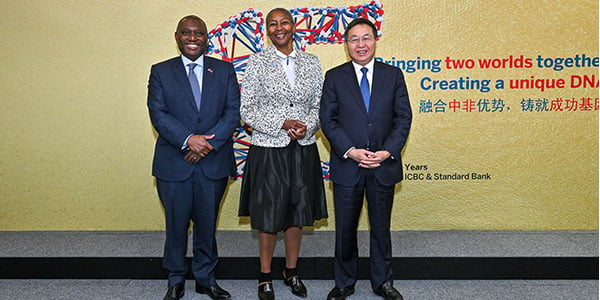
Inflation and interest rate relief underway
Recently, we have seen the beginnings of an interesting debate developing between economists and money market investors about the timing and depth of the much-anticipated interest rate cutting cycle in South Africa.
The consensus expectation of economists polled by Bloomberg is for the SA Reserve Bank (SARB) to cut rates by a cumulative 1.25%, possibly starting as soon as the current economic quarter. In sharp contrast, the money market has progressively shifted towards a later, and shallower, interest rate cutting cycle, now discounting only 0.5% of interest rate cuts in the next 12 months and starting only from the November 2024 Monetary Policy Committee (MPC) meeting. Our own forecasts we are positioned in between these two trajectories: we foresee 1% of cumulative rate cuts, in 0.25% increments, from the July 2024 MPC meeting.
In our view, the interest rate cutting cycle hinges predominantly on the inflation forecasts and risks: the SARB would likely cut interest rates only once confident about inflation reaching the mid-point of the 3-6% inflation target band relatively soon, and on a sustained basis.
Based on our current view, inflation forecasts taken in isolation should allow for prudent interest rate cuts quite soon — despite the SARB’s emphasis on the forecasts sustainably reaching 4.5% only by the fourth quarter of 2025. SARB’s inflation forecasts from the fourth quarter of 2024 are sustainably no more than a marginal 0.2% away from this goal. We therefore see scope for the SARB to start an interest rate cutting cycle prudently from the July MPC meeting when it would be effectively a mere quarter away from reaching its goal – which would be a very short period for a forward-looking central bank given the long(er) delay with which monetary policy decisions have their maximum impact on an economy.
This, however, is premised on the bank’s prevailing inflation forecasts (which mirror ours as well as the median of polled economists). But the spanner in the works here is the elevated risks to these inflation forecasts. Indeed, the risks to the rand exchange rate have, in our view, the highest probability of derailing the relatively benign inflation trajectory and, in turn, the forecast interest rate cuts.
The most prevalent currency risks are twofold. Globally, the timing and pace of global interest rate cuts – by the US Federal Reserve in particular – both reflect the intensity and prognosis for global inflation, and also influence SA’s interest rate differentials. As SARB Governor Lesetja Kganyago reiterated during the last post-MPC press conference, the SARB doesn’t “follow” global central banks (the Fed in particular) but rather monitors their decisions. Still, the SARB would likely be most comfortable with a domestic rate cutting cycle that broadly coincides with that of the US Fed. Currently, the consensus expectation is for rate cuts from the middle of this year, which would broadly coincide with the onset of the rate cutting cycle that we envisage for the SARB.
Locally, the general election on 29 May presents a potentially pivotal event. The exceedingly high uncertainty around the outcome and impact of the election effectively rules out an interest rate cut at the next MPC meeting in May. This decision on interest rates will fall on 30 May, before the election results would have been declared. Should the election outcome support general policy continuity, the rand, which is currently moderately undervalued, might appreciate as the risk premium currently being discounted should compress. However, the currency is likely only partly discounting the risk of an election outcome that steers policy into a more populist direction. The gradual, but impactful, traction with growth reform, as well as government’s commitment to fiscal consolidation, would then be at risk. In this scenario, the rand could weaken markedly, thereby stoking inflation. This would not only negate the potential for interest rate relief but could even put interest rate hikes on the table.
The other risks (bar those relating to the exchange rate), such as the recent resurgence in food inflation risks, are less likely to alter the inflation and interest rate prognosis materially. Notwithstanding the adverse impact on maize prices of the drier and hotter weather in February and March, we still foresee a gradual, but now likely stickier, moderation in food inflation in the coming months.
At the last MPC meeting, Governor Kganyago reiterated the MPC’s desire to anchor (surveyed) inflation expectations closer to the mid-point of the target range. We foresee inflation expectations easing further in response to declining inflation, although current levels aren’t necessarily preventing monetary easing. Previously, under otherwise similar growth and inflation prognoses, the SARB indeed lowered interest rates when longer-term inflation expectations were even marginally higher than they are now.
The bottom line is that there is scope for some interest rate relief from around July 2024, premised on the prevailing inflation forecasts. At a minimum, however, this would require more certainty on the key upside risks to the forecast inflation trajectory.


